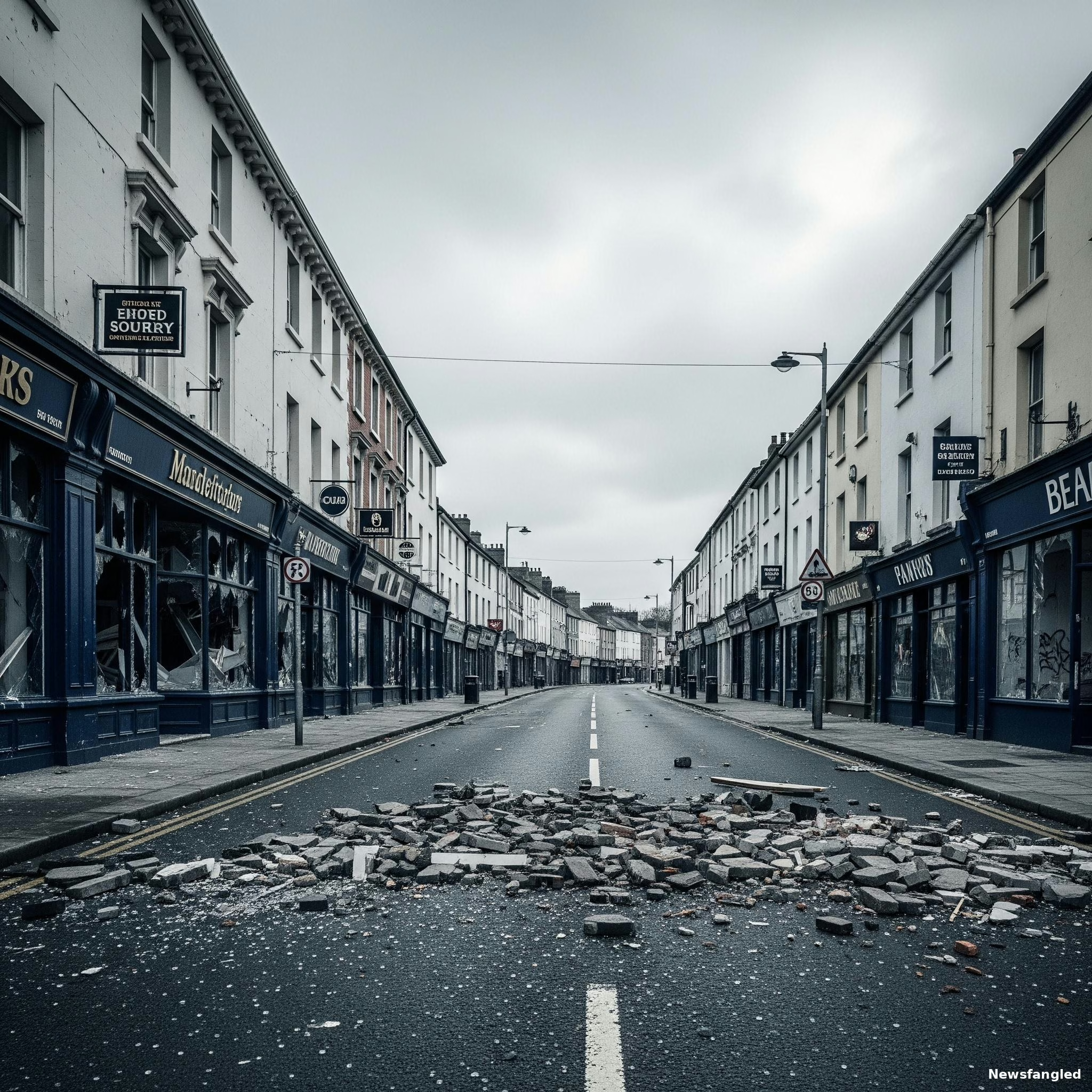In this article
The Ireland migrant crime protests that broke out in June 2025 have triggered a wave of national reflection — and condemnation. What began as public outrage in Ballymena following the arrest of two teenage boys has escalated into coordinated riots across multiple towns, leaving dozens of police injured, property destroyed, and communities divided.
Behind the chaos lies a crucial debate: is this about safety, or scapegoating?
The Spark: Ballymena
On Monday, 9 June, two 14-year-old boys were charged with the attempted rape of a teenage girl in Ballymena. Their reported Romanian background became a lightning rod for unrest. Vigils quickly gave way to rioting, with fires, bricks and fireworks used against police. Six people were arrested and at least 15 officers injured on the first night alone.
This type of grassroots disorder echoes events abroad, such as the LAPD’s violent clash with protesters in the U.S., reminding us how quickly street-level anger can erupt when trust breaks down.
A Town-by-Town Timeline of Escalation
🗓 Night-by-Night Breakdown
Night 1 – Ballymena
📅 Monday, 09 June 2025
- Riot erupts after charges announced
- Petrol bombs and bricks used
- 15 PSNI officers injured
- 6 arrests
- Migrant homes attacked and marked
Night 2 – Ballymena, Belfast, Carrickfergus
📅 Tuesday, 10 June 2025
- Protests spread to nearby towns
- Further PSNI injuries (~17 reported)
- Targeted homes marked with signs
- Tensions increase, described as “organised”
Night 3 – Ballymena, Larne, Coleraine
📅 Wednesday, 11 June 2025
- Larne leisure centre, housing migrants, set on fire
- 33 officers injured
- Water cannon and reinforcements deployed
- PSNI describe situation as increasingly dangerous
Night 4 – Portadown, Derry/Londonderry
📅 Thursday, 12 June 2025
- Clashes intensify in Portadown
- 22 officers injured in attacks with bottles and fireworks
- 2 arrests made at the scene
Night 5 – Portadown
📅 Friday, 13 June 2025
- Continued violence in the town
- Calm begins returning elsewhere
- PSNI maintain heightened presence
Running Totals:
- 63 police officers injured
- 17 total arrests
- 7 towns affected by disorder
- At least 14 migrant families displaced due to threats or arson
Each of these events played a key role in shaping public perception of the Ireland migrant crime protests and their broader implications.
Underlying Causes of the Ireland Migrant Crime Protests
While official responses have strongly condemned the unrest as racially motivated, many residents have raised concerns about broader issues — including housing pressure, community safety, and trust in local services. Several towns involved in the unrest have seen demographic changes in recent years amid economic strain and reduced public spending.
Authorities and media outlets note that the Ireland migrant crime protests have been amplified by online misinformation and social media mobilisation, some with clear ties to far-right networks.
Political and Policing Response
Northern Ireland’s First Minister Michelle O’Neill and other political leaders have labelled the events a threat to social cohesion and public safety. PSNI Chief Constable Jon Boutcher referred to the week as a “shameful chapter,” while Assistant Chief Constable Ryan Henderson called the violence “coordinated, xenophobic and deeply dangerous.”
Reinforcements from Police Scotland were called in midweek as water cannons were deployed and riot policing escalated. PSNI have now launched multiple investigations into hate crimes, arson, and riot behaviour.
Reuters reports that Northern Irish police warn “people in fear of their lives” after riots spread beyond Ballymena to nearby towns — highlighting the growing sense of vulnerability following the Ireland migrant crime protests .
A Country Watching Itself Burn — and Asking Why
This isn’t just about one incident. It’s about a population wrestling with rapid change, economic hardship, and rising mistrust in institutions. The Ireland migrant crime protests have exposed the cracks — not just between communities, but within Ireland’s social contract.
As the Guardian argues, this may not be about protection at all — but the unchecked rise of prejudice dressed in patriotism. These tensions aren’t just domestic. Similar shifts in political expression and social frustration are playing out globally.
If root causes like inequality, housing shortages, and policy failures aren’t addressed, this won’t be the last flashpoint.
Reader Comments
Newsfangled encourages respectful, informed discussion.
Were you affected? Do you see these events as protest, hate — or both?
Join the conversation below.


We want to hear your what you have to say